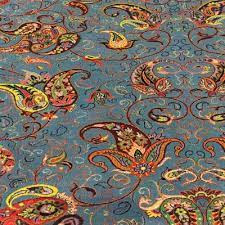I used to struggle so hard with names it became a genuine non-navigable impediment to my game prep—if I couldn't find the right name for a place, I would rapidly lose interest in the idea and it die on the vine. Eventually though I came to a solution: offload my place-naming to a naming convention.
Every time I needed a new region or settlement, I used the name of a fabric type. For a stretch of years, my players sought mythic treasure in the island of Cottondor, fought witches in the blighted lands of Woolovia, explored among the ancient trees of the Gabardine Forest, and partied and schemed their way through the bustling city-state of Corduroy. I called the setting "Fabricant."
Most of the locations in my game were conceived as me thinking "I need a place for x" and then looking at a big list of fabric names, letting whatever jumped out at me guide the look and feel of the place. The trick I found was that having the name first and working backward to the details of the place is far easier than the opposite approach. You're using a name to evoke somewhere that largely doesn't exist yet, as opposed to making a place and then struggling to find a phrase or collection of syllables that truly captures it.
And even when you do have a pretty clear idea for a place, a naming convention expedites the naming process by giving some guardrails to work within.
Why fabric types? There are a lot of them, they're usually short and easy to remember, and they often have a good sound to them. Also helps that textiles come from all over the world so there are names for all kinds of eras and cultures.
One might worry that fabric names are already known as such by the players and that repurposing them as place-names might limit their ability to buy in to the fantasy of the world. That wasn't an issue for me: what I observed is that once the players heard the names in the context of the game world, they were able to form a sort of subconscious line in their mind that delineated the fabric names from the place names. My friend Mike only came to realize the whole fabric thing six whole months into the campaign. C'est la différance.
The naming convention did run me into another issue though, and it was a rather predictable one: after a while I started to feel pigeonholed. Even with a wealth of fabric name options available, I started to feel a bit listless about the whole thing. I never broke the naming convention, but after the campaign ran its course, I never since went back to a naming convention. But the one I had was substantially useful to me for quite some time, and I would still consider using one for shorter adventures or campaigns.
Here's the shortlist of fabrics I compiled for place-naming. A good amount of them had use in my old game, but most of them were kept in reserve, only loosely sketched out with a handful of notes based on what the word sounded like to me. See what sort of places the fabric names evoke in your mind:
Baez
Bombazine
Brocade
Burrato
Cambric
Camlet
Chantilly
Corduroy
Damask
Elastane
Flannels
Foulard
Gaberdine
Ghalamkar
Gingham
Greige
Grenfell
Herringbone
Hessian
Hopsack
Jacquard
Jute
Lanon
Lawn
Loden
Lycra
Merino
Neoprine
Poplin
Rinzu
Ripstop
Saga Nishiki
Samite
Shantung
Sharkskin
Spannette
Tartan
Tencel
Twill
Velour
Voile
Whipcord
Wigan
Zephyr
